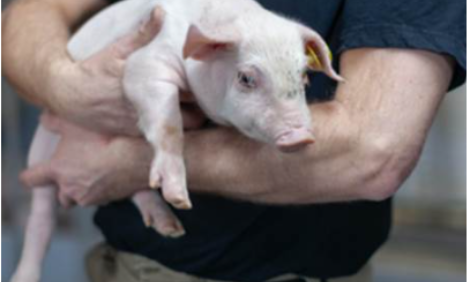



Comparison of Three Commercial Vaccines for the Control of Salmonella in Pigs in Their Effect of Faecal Shedding and Performance
The vaccine given at weaning produced the best performance with respect to growth performance and Salmonella shedding, according to B.C. Cruz, N.R. Carreó and A.J. Palacios.Introduction
Salmonellosis is one of the most common infections in swine production, leading to important economic loss due to mortality, morbidity and the cost of non-specific treatment. Attenuated vaccines have been the main immunological basis for the control of these infectious diseases. In general, live attenuated vaccines induce a superior immunological response than the inactivated ones. Vaccination significantly reduces clinical signs, and the colonisation and excretion of Salmonella spp>. The available bacterin vaccines stimulate a strong humoral response providing protection against the septicemic phase1,2.
The aim of this study was to investigate the effect of three different products on the shedding of Salmonella spp. in faeces, and on standard production parameters.
Materials and Methods
The study was carried out on a farm in Mexico operating a continuous production system. From weekly batches, pigs were randomly selected, individually identified and assigned to one of four treatment groups, each of 20 piglets: three vaccinated with different commercial vaccines, and an unvaccinated control group. Group 1: unvaccinated controls; Group 2: a modified vaccinea from S. cholerae suis strain SC-54, for intranasal use in a single dose at one day old; Group 3: modified vaccineb against S. cholerae suis, for oral administration in a single dose at three weeks of age; Group 4: a bacterinc vaccine against S. cholerae suis and S. typhimurium, for parenteral administration in two doses at three and five weeks of age.
Rectal swabs were taken five, 10 and 21 days post-vaccination for bacteriological analysis. Serum samples were collected at 70, 109 and 154 days of age for the detection of S. cholerae suis antibodies by ELISA (HerdCheck™, Idexx, EE.UU). Pigs were weighed at birth, 21, 70, and 105 days old and when sold. Average daily weight gain (ADG) and feed efficiency were calculated for a series of growing periods. Data were evaluated by variance analysis with a Tukey test using SPSS 15.0 statistics software.
a Boehringer-Ingelheim Vetmedica, bIntervet-Schering-Plough, c Novartis Animal Health Inc.
Results
Graph 1 shows S.cholerae suis faecal shedding after vaccination. Chart 1 shows the production parameters (ADG by period, and feed efficiency), morbidity (signs of digestive disturbance) and mortality.

Discussion
Shedding in Group 3 was less than in the control group throughout the cycle. Although all products led to reduced shedding, the single dose vaccine on the first day of age (Group 2) applied to an immature intestine in the presence of high maternally-derived antibodies (MDA) seemed to compromise the health of the piglets, evident from low weight gains during the sucking and growing phases, with severe morbidity and mortality.
The vaccine given at weaning (Group 3) produced the best performance with respect to ADG, morbidity, mortality and Salmonella spp. shedding.
The use of a safe vaccine against Salmonella spp. is a useful tool in the control of the disease. It helps reduce excretion and, together with biosecurity measures and good management, is the key to reducing damage and economic loss due to disease caused by Salmonella spp.
References
- Kolb J. Proc. 17th IPVS, Ames, Iowa, USA, 2002. 189
- Erdman, M.M. Proc.17th IPVS Ames, Iowa, USA, 2002. 574
This paper was presented at the 21st International Pig Veterinary Society (IPVS) Congress 2010 on 19-21 July 2010 in Vancouver, Canada.
For more information about the Congress, click here.
Further Reading
| - | Find out more information on salmonellosis by clicking here. |
July 2010









